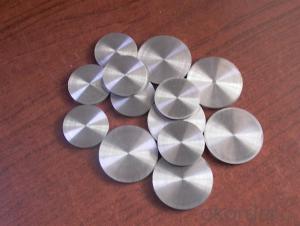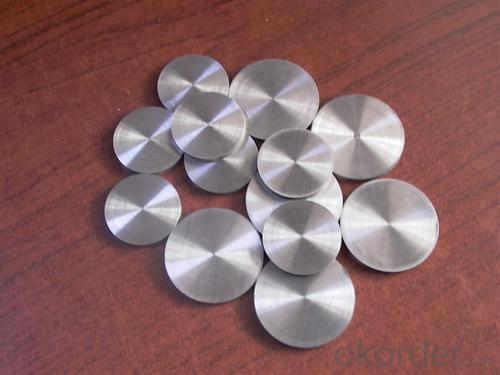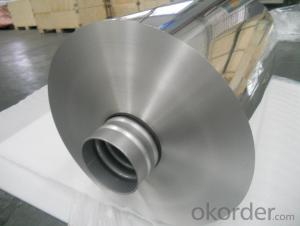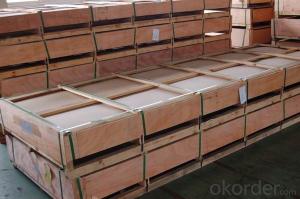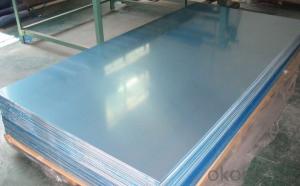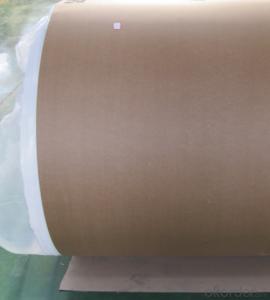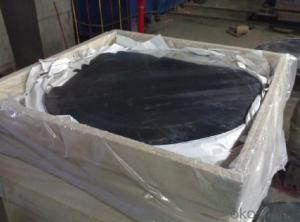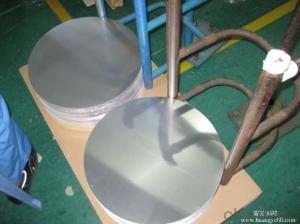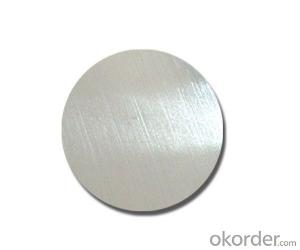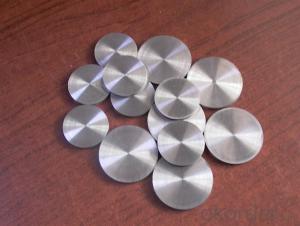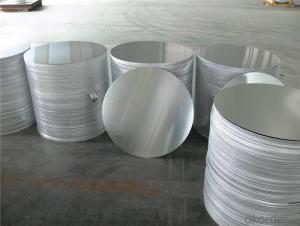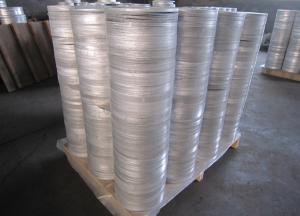Aluminum Foil Sheets Continuous Casting Aluminium Circle for Spinning Pan
- Loading Port:
- Shanghai
- Payment Terms:
- TT OR LC
- Min Order Qty:
- 2 m.t.
- Supply Capability:
- 5000 m.t./month
OKorder Service Pledge
OKorder Financial Service
You Might Also Like
Specification
1.Structure of Continuous Casting Aluminium Circle for Spinning Pan
Continuous Casting Aluminium Circle for Spinning Pan is one semi-finished aluminium material. This Aluminium Circle is widly used to produce aluminium pot, especially for spinning The alloy AA1050 is widly used in building, industry ect. Its weight is much lower than steel. So many customers choosed aluminium material instead of steel.
2. Main features of Continuous Casting Aluminium Circle for Spinning Pan
a.Competitive price---We have our own mills and can produce mill finished aluminium coils, so we can control the production cost better.
b.Professional after-sale service---We have more than 15 years exportation experience and you need not worry about the exporation problems.
c.Fast delivery time---We can control the delivery time within 35 days.
3. Image
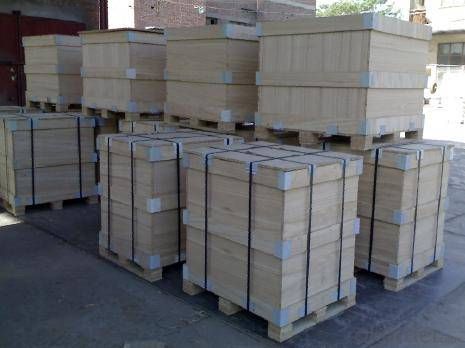
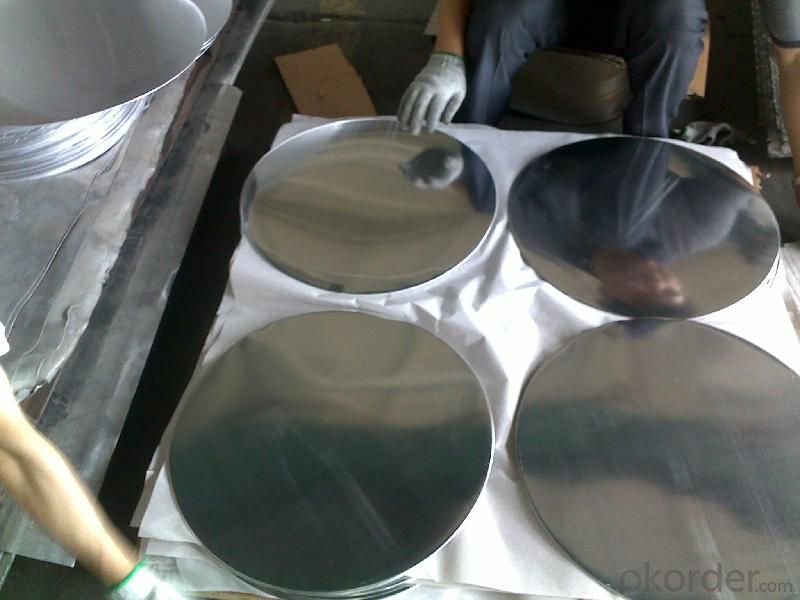
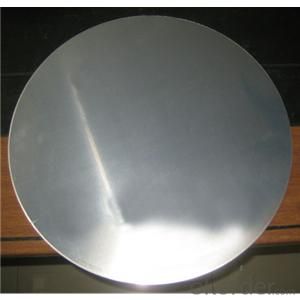
4. Product Specification
| Alloy | Temper | Thickness | Diameter | Weight |
| AA1050 | H14 | 0.2MM-2MM | 100MM-1000MM | 2 TONS |
5.FAQ:
What is the quality standard?
---Usually our standard is GB3880-2006
What is the largest width?
---It is 2300mm
What is the MOQ?
---Usually we can accept 80 tons.
- Q: How does the thickness of aluminum sheet affect its formability?
- The formability of an aluminum sheet is greatly impacted by its thickness. Generally, thinner sheets of aluminum are more easily shaped and are more malleable compared to thicker sheets. This is due to the fact that thinner sheets have less resistance to deformation and require less force to bend or stretch. On the other hand, thicker aluminum sheets have higher resistance to deformation and are less malleable. They necessitate more force and energy to shape, and are more susceptible to cracking or tearing during forming processes. Additionally, thicker sheets are more likely to experience springback, where the material partially returns to its original shape after being formed. The formability of aluminum sheets is also influenced by the specific forming process being used and the alloy composition. In certain cases, specific alloy compositions or heat treatments can enhance the formability of thicker sheets, making them easier to shape. In conclusion, the formability of an aluminum sheet is directly affected by its thickness. Thinner sheets are generally easier to shape and more malleable, while thicker sheets require more force and are less malleable. The alloy composition and specific forming processes being used can also impact the formability of aluminum sheets.
- Q: Can aluminum sheets be used for food processing conveyors?
- Yes, aluminum sheets can be used for food processing conveyors. Aluminum is a lightweight, durable, and corrosion-resistant material that is often preferred in the food industry due to its hygienic properties. It is commonly used for making conveyor belts and other equipment in food processing facilities.
- Q: On the web page to see more information on the plating aluminum plate, I do not know what is the difference between aluminized and aluminum plating performance?
- Brief introduction of hot dip aluminizing of steelHot dip aluminizing of steel is a new type of coating process for forming alloy aluminum layer on the surface of steel when molten steel products are inserted into molten aluminum liquid at a certain temperature.Hot dipped aluminized steel has high strength of steel matrix and corrosion resistance, wear resistance and high temperature resistance of aluminum layer. Its corrosion resistance is 5-10 times that of galvanized steel; it is resistant to sulfide and heat corrosion. Its performance is better than 18-8 stainless steel. Therefore, it can bring obvious economic benefits to users.
- Q: Can aluminum sheets be used for wall cladding?
- Yes, aluminum sheets can be used for wall cladding. Aluminum is a popular choice for cladding due to its lightweight nature, durability, and corrosion resistance. It can be easily shaped and installed, making it a versatile option for various architectural applications, including wall cladding.
- Q: This question asks for a list of various fasteners that are commonly used in the installation process of aluminum sheets.
- <p>There are several types of fasteners used for installing aluminum sheets, including: 1. Self-tapping screws, which create their own threads in the material. 2. Rivets, which join two pieces of material by compressing them together. 3. Pop rivets, a type of rivet that can be installed using a handheld tool. 4. Structural adhesives, which bond the sheets together without visible fasteners. 5. Welding, although not a fastener, it's a method used to join aluminum sheets permanently. 6. Mechanical fasteners like bolts and nuts, which are tightened to secure the sheets. 7. Clips and clamps, used for temporary or decorative installations. Each type has its own advantages and is chosen based on the specific requirements of the installation, such as load-bearing needs, aesthetic considerations, and the environment in which the aluminum sheets will be used.</p>
- Q: What are the different methods for punching aluminum sheets?
- There exist numerous techniques for punching aluminum sheets, each possessing its own advantages and applications. Among the different methods are: 1. Manual Punching: This approach entails using handheld tools like handheld punches or hole punches to manually create holes or shapes in the aluminum sheet. It is appropriate for small-scale or low-volume production and provides flexibility in terms of hole size and shape. 2. Mechanical Punching: Mechanical punching involves the utilization of a mechanical press machine equipped with a punch and die set. The sheet is inserted into the machine, and the punch is driven through the material, forming holes or shapes. This technique is quicker and more efficient than manual punching and is fit for medium to high-volume production. 3. CNC Punching: Computer Numerical Control (CNC) punching involves the utilization of automated machinery programmed to punch holes or shapes based on a digital design. The aluminum sheet is loaded onto the machine, and the CNC controls the movement of the punch and die to create precise and intricate patterns. CNC punching offers high accuracy, repeatability, and speed, making it ideal for high-volume production and intricate designs. 4. Laser Punching: Laser punching combines the use of a laser cutter and a mechanical punch to produce holes or shapes in aluminum sheets. The laser beam vaporizes or melts the material, while the punch ejects the cut part from the sheet. This method offers high precision, versatility, and the ability to swiftly cut complex shapes. However, it is typically more expensive and time-consuming compared to other methods. 5. Notching: Notching is a technique employed to create V-shaped or U-shaped cuts in aluminum sheets. It is often used for joining or folding the material to form corners or edges. Notching can be done manually or with the assistance of a mechanical notching machine. The selection of a punching method relies on various factors such as the desired hole size and shape, production volume, precision requirements, complexity of design, and budget. It is crucial to consider these factors and consult with experts to determine the most suitable method for punching aluminum sheets based on specific needs and applications.
- Q: How to clean the engine oil and kerosene on the surface of aluminum sheet?
- you can buy a bottle of petroleum ether in chemical raw material shop, it will be clean after rubbing, or you can buy solvent oil.
- Q: Can aluminum sheets be used for honeycomb panels?
- Indeed, honeycomb panels can indeed utilize aluminum sheets. To create honeycomb panels, it is customary to bond two slender sheets of material, like aluminum, to a core material in a honeycomb formation. Aluminum sheets are frequently employed in this process due to their advantageous traits of being lightweight and possessing high strength, rendering them an optimal selection for constructing honeycomb panels. The honeycomb structure itself results in a superior strength-to-weight ratio, rendering the panels suitable for an array of applications, encompassing aerospace, automotive, construction, and furniture industries. In addition to this, the aluminum sheets offer desirable attributes such as durability, resistance to corrosion, and ease of fabrication, thereby making them a widely favored option for honeycomb panels.
- Q: What are the weight-saving benefits of using aluminum sheets in different applications?
- There are several weight-saving benefits of using aluminum sheets in different applications. Firstly, aluminum is a lightweight metal, with a density much lower than other commonly used materials such as steel. This means that by replacing steel sheets with aluminum sheets, significant weight reduction can be achieved in various applications. The reduced weight of aluminum sheets is particularly advantageous in transportation industries. For example, in the automotive sector, using aluminum sheets for body panels, chassis components, and other structural parts can significantly lighten the vehicle's overall weight. This weight reduction leads to improved fuel efficiency, as less energy is required to move the lighter vehicle. Additionally, lighter vehicles generally have better acceleration, handling, and braking performance. In the aerospace industry, the weight-saving benefits of aluminum sheets are even more crucial. Every extra kilogram of weight on an aircraft can increase fuel consumption, and thus operating costs. By utilizing lightweight aluminum sheets in the construction of aircraft structures, such as wings, fuselages, and engine components, the overall weight of the aircraft can be reduced, resulting in improved fuel efficiency and extended flight range. Another industry where the weight-saving benefits of aluminum sheets are highly valued is the construction sector. Aluminum sheets are often used in the construction of buildings and infrastructure due to their lightweight nature. This lightweight characteristic not only makes installation easier but also reduces the overall load on the building's foundation. Moreover, using aluminum sheets in construction can also lead to cost savings, as lighter materials require less support structure and can be transported more efficiently. Furthermore, the weight-saving benefits of aluminum sheets extend to various other applications such as packaging, electronics, and consumer goods. In packaging, aluminum sheets are commonly used for lightweight and flexible packaging materials, reducing shipping costs and environmental impact. In electronics, aluminum sheets are used in devices like laptops and smartphones, where weight reduction is desirable for portability. Lastly, in consumer goods, aluminum sheets are utilized for producing lightweight and durable products, such as furniture, cookware, and sports equipment. In conclusion, the weight-saving benefits of using aluminum sheets in different applications are significant. The lightweight nature of aluminum allows for reduced weight in transportation industries, improved fuel efficiency, better performance, and extended flight range in aerospace applications, cost savings and easier installation in construction, as well as various advantages in packaging, electronics, and consumer goods. Overall, aluminum sheets offer a versatile and efficient solution for achieving weight reduction and enhancing performance in diverse industries.
- Q: What is the cost of an aluminum sheet?
- The price of an aluminum sheet can change due to various factors, including thickness, size, grade, and market conditions. Typically, aluminum sheets are priced based on square footage or weight. On average, the price can vary from $0.50 to $5 per square foot or $1 to $10 per pound. It is crucial to understand that these figures are approximate and subject to change based on factors such as supply and demand, location, and others. To obtain an accurate cost, it is advisable to reach out to local suppliers or explore online marketplaces for the latest pricing information.
Send your message to us
Aluminum Foil Sheets Continuous Casting Aluminium Circle for Spinning Pan
- Loading Port:
- Shanghai
- Payment Terms:
- TT OR LC
- Min Order Qty:
- 2 m.t.
- Supply Capability:
- 5000 m.t./month
OKorder Service Pledge
OKorder Financial Service
Similar products
Hot products
Hot Searches
Related keywords
